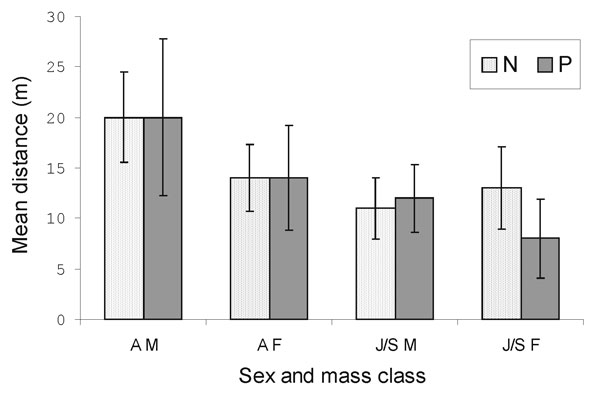Volume 8, Number 9—September 2002
Research
Behavioral, Physiologic, and Habitat Influences on the Dynamics of Puumala virus Infection in Bank Voles (Clethrionomys glareolus)
Figure 2

Figure 2. Mean distances (m) between capture points of positive and negative bank voles for PUUV infection in the four capture-mark-recapture (CMR) grids. N, negative; P, positive; AM, adult males; AF, adult females; J/S M, juvenile and subadult males; J/S F, juvenile and subadult females. Error bars represent 95% confidence intervals.
Page created: July 16, 2010
Page updated: July 16, 2010
Page reviewed: July 16, 2010
The conclusions, findings, and opinions expressed by authors contributing to this journal do not necessarily reflect the official position of the U.S. Department of Health and Human Services, the Public Health Service, the Centers for Disease Control and Prevention, or the authors' affiliated institutions. Use of trade names is for identification only and does not imply endorsement by any of the groups named above.